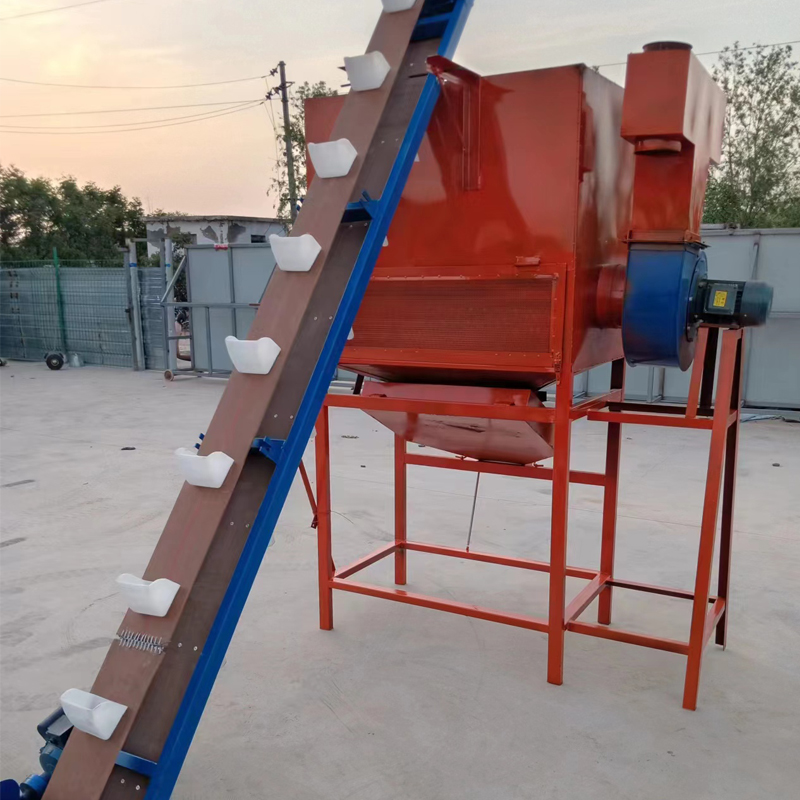Exploring the Differences Between Feed Mills and Hammer Mills in Agriculture Processing Techniques
Jul . 27, 2024 16:48 Back to list
Exploring the Differences Between Feed Mills and Hammer Mills in Agriculture Processing Techniques
Understanding Feed Mill Hammer Mills Their Importance and Functionality
Feed mills are integral components of the agricultural and livestock industries, facilitating the production of animal feed that nourishes livestock and ensures high-quality food production. Among the various machines employed in feed production, the hammer mill stands out as a pivotal tool, playing a crucial role in the grinding process of feed ingredients.
What is a Hammer Mill?
A hammer mill is a type of crushing machine that uses high-speed rotating hammers to impact feed materials, reducing them into smaller particles. It operates on the principle of shear and impact, effectively breaking down grains, pellets, and other feed ingredients into uniform sizes suitable for animal consumption. This equipment is predominantly used in feed mills to prepare rations for livestock, ensuring that the feed is easily digestible and maximized for nutritional absorption.
Functionality of Hammer Mills
The typical hammer mill consists of a rotating shaft with several hammers attached to it. When feed ingredients are fed into the machine, they come into contact with the rapidly spinning hammers. The mechanical force generated by the high-speed rotation breaks down the material into smaller pieces. The size of the output particles can be adjusted by varying the screen size or changing the hammer configuration, allowing mill operators to achieve their desired feed characteristics.
One of the key advantages of hammer mills is their versatility. They can process a wide range of materials, including corn, wheat, soybean meal, and various by-products. This flexibility makes hammer mills suitable for various formulations, whether in mash form or pelleted feed, catering to the specific nutritional needs of different animal species.
The Importance of Particle Size in Animal Nutrition
feed mill hammer mill

Particle size plays a crucial role in the digestibility and overall quality of animal feed. Smaller particles typically enhance the surface area for the digestive enzymes and contribute to better nutrient absorption. Hammer mills are thus essential in achieving the desired particle size, which can directly impact feed efficiency, growth rates, and the general health of livestock.
Furthermore, the reduction of particle size through hammer milling can also improve the pelleting process. Properly milled feed is easier to pellet, leading to enhanced feed handling, reduced feed wastage, and improved feeding behavior among animals. As a result, hammer mills contribute significantly to the economic efficiency and sustainability of feed production.
Maintenance and Considerations
While hammer mills are robust and efficient, maintaining them is vital to ensure optimal performance and longevity. Regular inspection of hammers for wear and tear, monitoring screen slots for clogging, and maintaining appropriate feed flow are essential practices. Neglecting these aspects can lead to reduced efficiency, increased energy consumption, and higher operational costs.
Additionally, safety measures should be in place to protect operators. The high-speed operation of hammer mills presents potential hazards, including noise exposure and the risk of entanglement. Proper training and safety protocols should be established to minimize these risks.
Conclusion
In summary, hammer mills are indispensable in feed mill operations, significantly influencing the quality of animal feed through their grinding capabilities. By understanding the functionality and importance of hammer mills, feed mill operators can optimize their feed production processes, ultimately leading to healthier livestock and more sustainable agricultural practices. As the demand for efficient and high-quality animal feed continues to grow, the role of hammer mills in feed production will remain ever more critical.
-
High Performance Exhaust Fan – Efficient Ventilation Solutions for Home
NewsJun.10,2025
-
High-Quality Gestation Pen for Sows Durable Mobile Pig Pen & Simple Pig Pen Solutions
NewsJun.10,2025
-
High Quality Rabbit Cage Double Tier Designs & Welded Wire Mesh Supplier
NewsJun.10,2025
-
Floating Fish Feed Machine - High Efficiency Floating Fish Feed Extruder for Small Scale Production
NewsJun.10,2025
-
Premium Poultry Housing Solutions Mobile & Commercial Free Range Options
NewsJun.10,2025
-
Industrial FRP Fans Corrosion-Resistant Blades & Centrifugal Systems
NewsJun.09,2025






